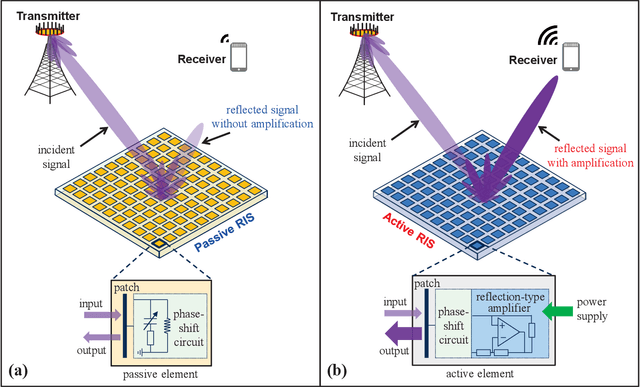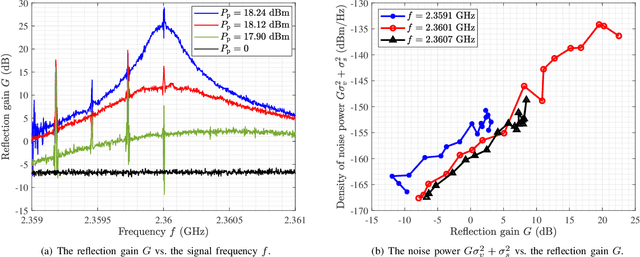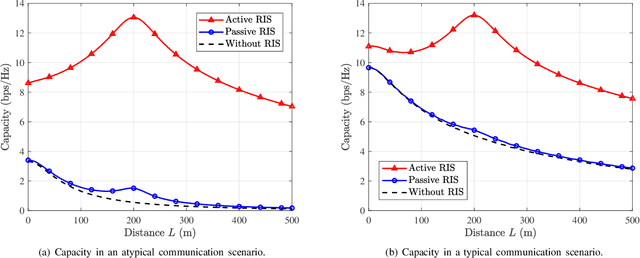Xibi Chen
Active RISs: Signal Modeling, Asymptotic Analysis, and Beamforming Design
Dec 31, 2022Abstract:Reconfigurable intelligent surfaces (RISs) have emerged as a candidate technology for future 6G networks. However, due to the "multiplicative fading" effect, the existing passive RISs only achieve a negligible capacity gain in environments with strong direct links. In this paper, the concept of active RISs is studied to overcome this fundamental limitation. Unlike the existing passive RISs that reflect signals without amplification, active RISs can amplify the reflected signals via amplifiers integrated into their elements. To characterize the signal amplification and incorporate the noise introduced by the active components, we verify the signal model of active RISs through the experimental measurements on a fabricated active RIS element. Based on the verified signal model, we formulate the sum-rate maximization problem for an active RIS aided multi-user multiple-input single-output (MU-MISO) system and a joint transmit precoding and reflect beamforming algorithm is proposed to solve this problem. Simulation results show that, in a typical wireless system, the existing passive RISs can realize only a negligible sum-rate gain of 3%, while the active RISs can achieve a significant sum-rate gain of 62%, thus overcoming the "multiplicative fading" effect. Finally, we develop a 64-element active RIS aided wireless communication prototype, and the significant gain of active RISs is validated by field test.
Active RIS vs. Passive RIS: Which Will Prevail in 6G?
Mar 31, 2021



Abstract:From 1G to 5G, wireless channels have been traditionally considered to be uncontrollable. Thanks to the recent advances in meta-materials, reconfigurable intelligent surfaces (RISs) have emerged as a new paradigm for controlling wireless channels intelligently, thus making it a revolutionary technique for future 6G wireless communications. However, due to the "double fading" effect, RIS only achieves a negligible capacity gain in typical communication scenarios, which however has been widely ignored in many existing works. In this paper, the concept of active RIS is proposed to break this fundamental physical limit. Different from the existing passive RIS that reflects signals passively without amplification, active RIS can actively amplify the reflected signals. We then develop a signal model for active RIS, which is validated through experimental measurements. Based on this new signal model, we analyze the capacity gain achievable by active RIS and formulate the capacity maximization problem in an active RIS aided system. Next, a joint transmit and reflect precoding algorithm is proposed to solve this problem. Finally, extensive results show that, compared with the baseline without RIS, the existing passive RIS can realize a negligible capacity gain of only 3% in typical application scenarios, while the proposed active RIS can achieve a noticeable capacity gain of 129%, thus overcoming the fundamental limit of "double fading" effect.
 Add to Chrome
Add to Chrome Add to Firefox
Add to Firefox Add to Edge
Add to Edge